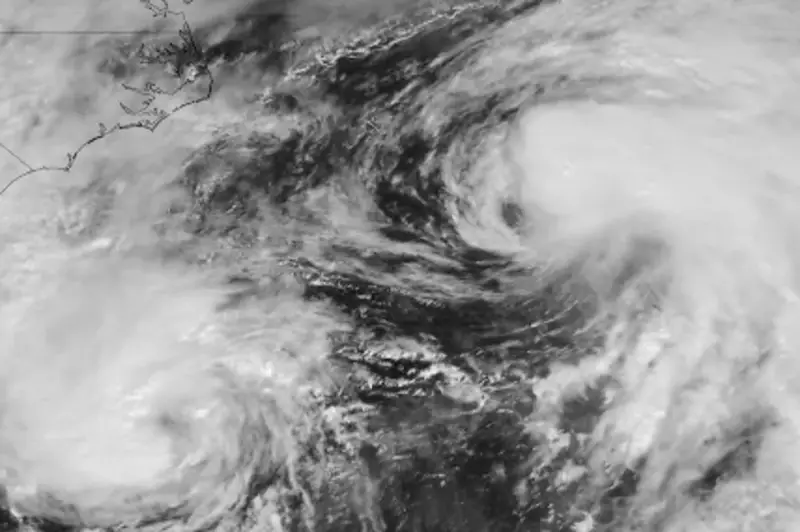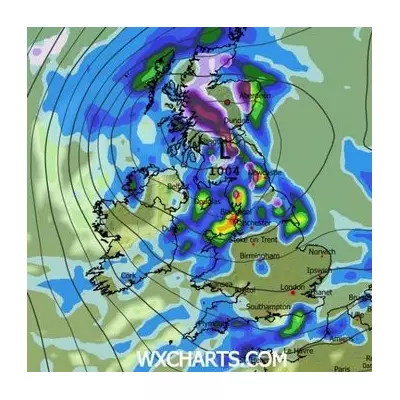
In a breathtaking meteorological spectacle that has left weather experts both baffled and fascinated, Hurricanes Imelda and Humberto have been captured engaging in what appears to be a perfectly synchronized atmospheric dance across the Atlantic Ocean.
The extraordinary phenomenon, known scientifically as the Fujiwhara effect, occurs when two tropical cyclones orbit around a common center, creating a mesmerizing celestial waltz that defies conventional weather patterns. Satellite imagery reveals the two massive storm systems moving in harmonious rotation, their spiral bands intertwining like partners in an elaborate ballroom performance.
Rare Meteorological Ballet
Meteorologists monitoring the unusual event describe it as one of the most pronounced examples of binary hurricane interaction ever recorded. The dance between Imelda and Humberto represents nature's raw power expressed with unexpected elegance, showcasing the complex dynamics that govern our planet's weather systems.
While hurricane interactions are not entirely uncommon, the precise synchronization and duration of this particular event have captured international attention. Weather enthusiasts and professional meteorologists alike have been tracking the development with a mixture of scientific curiosity and sheer wonder.
Understanding the Fujiwhara Effect
The phenomenon takes its name from Sakuhei Fujiwhara, the Japanese meteorologist who first described the interaction in 1921. When two hurricanes approach within approximately 900 miles of each other, they begin to influence each other's trajectories, often resulting in this distinctive rotational pattern.
In some cases, the interaction can cause the storms to merge, while in others they may simply exchange energy before continuing on separate paths. The current dance between Imelda and Humberto appears to be following the latter pattern, with both systems maintaining their individual identities throughout the intricate atmospheric performance.
Climate Implications and Future Patterns
Scientists are particularly interested in whether such events might become more frequent as ocean temperatures continue to rise. The increasing prevalence of unusual weather phenomena provides crucial data for climate researchers studying the long-term effects of global warming on storm behaviour.
While the immediate spectacle provides stunning visual material, the underlying science offers valuable insights into hurricane prediction models and potential future patterns in an evolving climate landscape.
As Imelda and Humberto continue their atmospheric waltz, meteorologists remain vigilant, monitoring both the scientific significance and the potential impacts of these powerful weather systems as they move across open waters.





